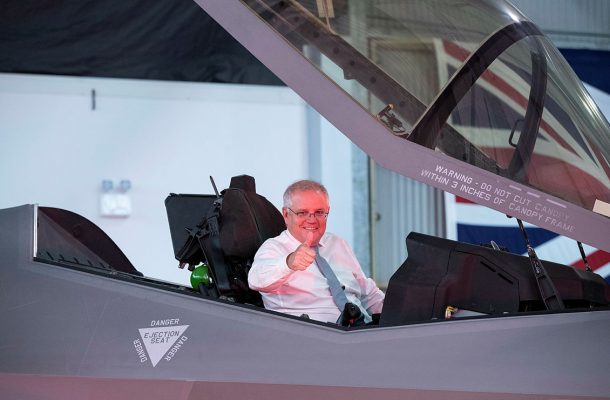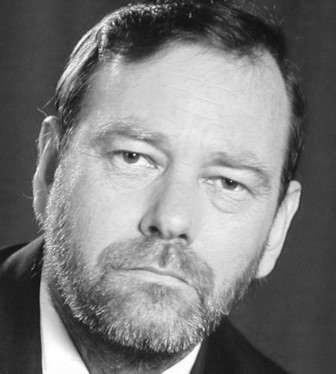The end of the old order shakes Australia’s grand strategy

The term ‘grand strategy’ is usually too grandiose for the practical types who run Canberra.
Australia does baling-wire diplomacy—pragmatic and proudly makeshift—fixing stuff with a bit of wire and keeping it going.
Big powers do grand strategy, while Australia pitches in with no-nonsense nous. Or as Prime Minister Scott Morrison likes to put it in response to most challenges: ‘We’re a pretty focused bunch. We know what our job is and we are very focused on that.’
The problem for Oz international policy, though, is that the job we’re focused on is shape-shifting at alarming speed.
A shocking truth has hit a happy, status quo power, ever content to tinker with stuff to keep the show on the road: the international status quo is broken. The show has run off the road. Baling wire and duct tape can’t keep it together.
Thus, Australia’s statements about what it sees internationally have gone dark: ‘one of the most challenging times we have known since the 1930s and the early 1940s’, deteriorating strategic environment, biggest realignment in 75 years, and greater competition in the Indo-Pacific ‘making the region more contested and apprehensive’.
In the words of a consummate Canberra player, one of my favourite wise owls, we are ‘at the end of one form of international order—in this case, the only order contemporary Australian foreign policy has known’.
The speaker is Allan Gyngell, national president of the Australian Institute of International Affairs. The disappearing order was ‘established by the winners at the end of the Second World War, and suited Australia perfectly’, Gyngell notes.
It was based on liberal values like Australia’s own, structured around multilateral institutions, on which Australia was represented, and underpinned by the dominant power of the United States. American support for open international trade helped drive unprecedented global growth, while its network of alliances in Europe and Asia provided a stable security framework.
That’s a lot for a contented status quo power to see crumble.
For pragmatic and practical Oz, the grieving process has featured lots of bargaining but not much depression. Anger is targeted in public at Xi Jinping’s China; whatever private anger Canberra feels at Donald Trump’s rampage is expressed as polite concern at the state of US power. Elements of denial can be found back in the 2016 defence white paper and 2017 foreign policy white paper. But by the time of the 2020 defence strategic update, issued on 1 July, Australia had well and truly reached the final stage of grief: acceptance.
The arrival of acceptance means that Australia’s grand strategy—the one we didn’t need to talk about—has expired.
Grief is tempered by the truth that grand strategies are constantly in play and always have a life cycle. That ours served so well for so long was a great blessing. We could focus on matter-of-fact baling-wire business because the old system worked for us. Grand strategy is about ends, ways and means; as a happy status quo player, Australia could concentrate on ways and means because we were content with the ends in place.
Now we have to lift our eyes and raise our ambitions. What ends is the new era careering towards?
Numbers do context as well as counting, so note the regular statistics index in Australian Foreign Affairs:
Proportion of Australians who viewed China positively in 2017: 68%
Proportion who view China positively today: 15%Australian exports to China in 2018–19: $153.2 billion.
Value of exports currently subject to Chinese sanctions: $19.4 billion.
Talk about geoeconomics meets geopolitics!
Enough to drive you to drink. Only three months ago, Chinese customers drank 50% of Australian red wine exports; by January that was down to 1%.
The trade dimensions (and assumptions) of Oz grand strategy have been shaken. Xi applies the coercion stranglehold. Trump drove a truck through the World Trade Organization.
Nevertheless, a big bit of trade architecture we helped build was put in place on 15 November, with the signature of what boosters call the most important regional trade agreement ever signed, the Regional Comprehensive Economic Partnership. Possible ratification date: January 2022.
RCEP is the biggest regional trade deal, but not the deepest. Not much coverage of services, agriculture patchy. What began as a tidying-up exercise for ASEAN, to join all its various treaties, greatly serves China’s interests, and China-centric supply chains.
RCEP is a ‘joining together’ counter to the ‘decoupling’ duel between the United States and China.
Previously, Japan had no free trade agreement with China or South Korea. With RCEP, it does.
The gap on the RCEP stage was India, which pulled out. The US is the ghost at the feast.
Note a historic point: Asia has two big regional trade pacts that don’t include the US—RCEP and the rebadged Trans-Pacific Partnership.
The TPP is an American vision of Asia’s economic future that Donald Trump abandoned. Neither China nor the US is in the TPP, salvaged by Shinzo Abe with plenty of help from Malcolm Turnbull. To make up for the US defection, they added extra fizz and flavour to the TPP title, making it also a ‘Comprehensive and Progressive Agreement’ (they doth protest too much, methinks).
To merit the comprehensive tag, the CPTPP needs more players. An excellent form guide for prospective members is offered by Hayley Channer and Jeffrey Wilson: with South Korea the favorite, a comeback by the US a ‘game changer’, Britain a ‘swooper’, and China and Taiwan as the dark horses.
Joe Biden is a fresh jockey but domestic weight means this is a handicap race the US will struggle to rejoin, much less win.
China would have to grapple with the CPTPP’s tougher stance on tariffs and labour standards, and make major changes to the role of state-owned enterprises. Australia has welcomed China’s CPTPP interest, not least because such negotiations would require Beijing to take its hands off our throat.
The old order fades when Asia can contemplate having China at the centre of its two big trade deals, with the US on the outside of both. That’s not the decoupled world that Washington or Canberra wants.

Graeme Dobell has been reporting on Australian and international politics, foreign affairs and defence, and the Asia Pacific since 1975. He is Journalist Fellow at the Australian Strategic Policy Institute.















